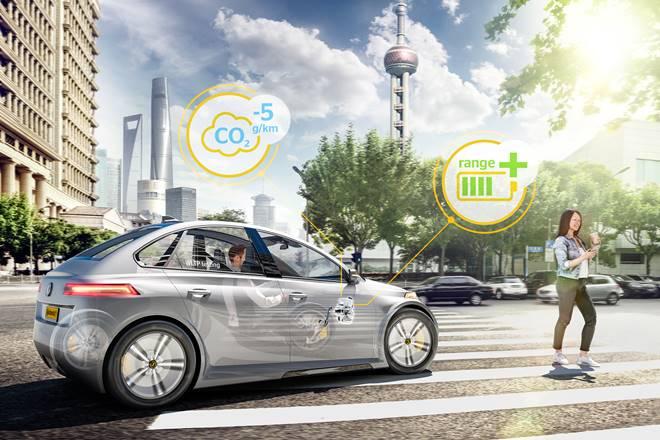One of the largest automobile additives manufacturers globally, Continental is marking the 50th 12 months since it first introduced ABS inside the market. Ever since, it has ended up one of the most acknowledged names amongst ABS providers across worldwide markets. As India steps into the future of mobility – electric and independent – in conjunction with the heightened need for greater vehicle protection today, Continental has new technology to inform us approximately. To research the brand more and its task into new technology for destiny mobility, we spoke with Krishan Kohli, Business Head – Vehicle Dynamics, Continental.

Continental ABS and Brake Systems
Kohli walked us through a brief records tour of Continental ABS, noting that the first actual anti-lock braking gadget MK I turned into was added in Frankfurt, Germany, in 1969. The commercial collection production of MK II ABS began in 1989 when Continental introduced the machine for the assembly line. Before this, ABS turned into supplied as a retro fitment for motors. Subsequently, Continental introduced TCS (traction manipulate gadget) and EBD (digital brake distribution). It turned into within the 12 months 1995 when Conti brought ESC (electronic stability
machine). Beginning with MK I in 1969, Continental is these days using MK one hundred ABS. Besides this, Kohli additionally advised us about the approaching MK C1, which is a pioneering one-box solution that consists of brake-by way of-cord, strength recuperation to, in the end, reduce CO2 emissions. The platform has already been commercialized in markets just like the US, Europe, and China. More on MK C1 platform to comply with.
Continental in India Today
Continental in India has a complete portfolio of ABS for 2-wheelers – unmarried- and twin-channel. Kohli tells us that 70-80% of demand for ABS programs comes from unmarried-channel gadgets for smaller displacement bikes. Considering a huge market for unmarried-channel ABS, Continental has developed the lightest ABS package that weighs only 420 gm. Besides ABS, Continental is familiar that ESC adoption in vehicles will in the end boom, so the producer is localizing the manufacturing of ESC systems properly.
Brasilia Declaration on Road Safety
Under the Brasilia Declaration, which was signed in 2015, India pledged to halve the variety of street accidents within u. S. Via the stop of this decade. On the pretext of this agreement, the government has delivered protection rules, such as mandatory ABS-wheelers 125cc and above.
Compared to 2017, while a WHO record noted that India witnessed sixteen fatalities consistent with hour due to avenue accidents, the clients are actually higher aware of protection functions. They are willing to pay 2 or 3% more for added safety functions like ABS. However, it’s miles an evolutionary process, and India will want extra time to get to safety features like self-sufficient braking.
Continental in India day after today
Continental had lengthy added ABS for passenger vehicles and two-wheelers. The next step for cars in India might be obligatory ESC and autonomous braking, which Conti already has in its portfolio. Earlier this 12 months, Continental showcased its self-reliant braking system to take a look at automobiles as nicely. Kohli brought that ESC adoption presently stands at 25-30% in India and might increase to one hundred% using 2023.
However, Kohli explains that thinking about site visitors’ behavior in India, stage 1 or 2 of independent braking may be feasible, but stage four and 5 might be a protracted way away.
India is stepping in the direction of popularity to electric mobility, and now we’ve plenty of extra EVs than we did earlier. Speaking of ABS for hybrids and EVs, Kohli defined that the primary functioning of the system stays identical except for a few software changes. “Conti is ready with tech for EVs,” Kohli stated.
About development in braking tech for 2-wheelers, Kohli says that unmarried- and twin-channel ABS would service India’s -wheeler market for approximately 6-7 years put up which Continental will introduce crucial braking (integrated braking on front and rear for 500c and above), which has been commercialized in European markets.
MK C1 Brake System
As for MK C1’s advent in India, Kohli advised us that its miles, nonetheless multiple years earlier than this platform, will be adaptable to Indian situations. He further added that Continental hopes for technological maturity in India using the quit of the last decade so that MK C1 may be rolled out right here.
The MK C1 is in production given that 2016 and is in use in global markets. It uses brake-by means of-twine design, and Continental says that it permits recovery of braking electricity in a far wider range than trendy regenerative brake systems, decreasing CO2 emissions of hybrid electric-powered cars by around five g/km and extending the electrical range of all battery-powered cars with savings of around 30% regenerative energy as compared to a non-simulator brake machine.
This site has been made in keeping with the WLTP (Worldwide harmonized Light automobile Test Procedure) and confirmed via the TÜV, a German Technical Inspection Association. The “One-Box” gadget integrates the tandem master cylinder (TMC), brake booster, and control systems (ABS and ESC) right into an unmarried compact and weight-saving (about 30%) module. Continental’s MK C1 can build up braking strain in 150 ms (time-to-lock), that’s two times as speedy as conventional systems today.

